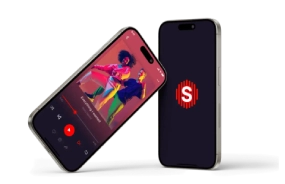Choosing between React vs React Native can be confusing, especially if you are new to web and mobile development. Both are created by Facebook and share similar concepts, but they are used for different purposes. React is mainly used to build fast and interactive web applications, while React Native is used to create mobile apps for iOS and Android using the same codebase.
Did you know? React is used by over 2 million websites, including top brands like Facebook, Instagram, and Airbnb, while React Native powers popular apps like Walmart, Discord, and Bloomberg.
Understanding how they work, their features, and when to use each one is important before starting a project. The wrong choice can lead to extra development time, higher costs, or performance issues. That’s why comparing them based on speed, flexibility, user experience, and project goals is essential.
In this complete guide, we will explain the difference between React and React Native in simple terms, highlight their key differences, and help you decide which one is the best fit for your business or project. Let’s make the right choice together!
Table of Contents
What is React?
React is a popular JavaScript library used for building user interfaces (UIs) for web applications. It was developed by Facebook and has gained widespread adoption due to its simplicity, flexibility, and high performance. React allows developers to create interactive, component-based UIs that are fast and easy to maintain. Businesses can hire React developers to create interactive, component-based UIs that are fast, scalable, and easy to maintain, ensuring a seamless user experience for their applications.
According to the 2024 Stack Overflow Developer Survey, React is the most widely used front-end JavaScript library, with over 40% of professional developers using it to build modern web applications.
Key Highlights of React:
- Component-Based Architecture: Breaks the UI into reusable components.
- Virtual DOM: React updates only the parts of the web page that change, improving performance.
- Declarative Syntax: Developers can describe how the UI should look based on the application state.
- Large Ecosystem: Works well with other libraries and frameworks like Redux, Next.js, or TypeScript.
How React Works
React works by using components and a virtual DOM to efficiently manage changes in a web application. Here’s how it works:
- Components: A React app is made of reusable components like buttons, forms, or cards. Each component can maintain its own state and render dynamically.
- JSX Syntax: React uses JSX, a syntax extension that looks like HTML, to define the UI.
- Virtual DOM: When data changes, React updates a virtual copy of the DOM first. Then, it compares it with the real DOM and only updates the changed parts, which improves speed.
- Unidirectional Data Flow: React has a one-way data flow, making applications predictable and easier to debug.
What is React Native?
React Native is a framework that allows developers to build mobile applications for iOS and Android using JavaScript and React concepts. Unlike React, which is web-focused, React Native renders native mobile UI components, giving the app a native look and feel. Many businesses work with top web development companies to hire experienced React Native developers who can deliver high-quality, scalable, and cross-platform mobile applications.
According to Statista 2024, over 50% of mobile developers prefer React Native for building cross-platform apps due to its ability to share a single codebase between iOS and Android, reducing development time and cost.
Key Highlights of React Native:
- Cross-Platform Development: Write one codebase for both iOS and Android.
- Native Components: Apps look and perform like native apps.
- Hot Reloading: Changes can be previewed instantly without restarting the app.
- Large Community: Plenty of libraries and third-party tools for faster development.
How React Native Works
React Native works similarly to React but focuses on mobile app development. Instead of web components, it uses native mobile components. Here’s how it works:
- Components: Uses mobile-specific components like <View>, <Text>, and <Image> instead of <div> or <span>.
- Bridge: React Native uses a bridge to communicate between JavaScript code and native APIs, ensuring smooth performance.
- Cross-Platform: The same codebase can run on both iOS and Android, with minor platform-specific tweaks.
- Hot Reloading: Allows developers to see changes immediately without rebuilding the app.
React vs React Native: Core Differences
Feature | React | React Native |
Platform | Web | Mobile (iOS & Android) |
Rendering | Virtual DOM (Browser) | Native Components |
UI Components | HTML & CSS | Native UI Components |
Performance | Fast for web apps | High, but depends on bridge for heavy tasks |
Code Reusability | Web only | Cross-platform mobile |
Deployment | Web servers | App Store / Play Store |
Learning Curve | Easy if familiar with JS | Slightly higher due to mobile concepts |
Pros and Cons of React
Pros:
- Fast and efficient with Virtual DOM
- Component-based architecture for modularity
- Large community and support
- SEO-friendly (with server-side rendering)
- Flexible with libraries and tools
Cons:
- Only for web apps (not mobile)
- Requires third-party libraries for routing, state management
- Learning JSX can be tricky for beginners
Pros and Cons of React Native
Pros:
- Cross-platform development saves time and cost
- Native-like performance and UI
- Hot Reloading speeds up development
- Reusable code across mobile platforms
- Strong community and library support
Cons:
- Complex apps may require native code
- Performance may lag for graphics-heavy apps
- Platform-specific issues can arise
- Limited SEO relevance (mobile apps)
React vs React Native: Performance and Features Comparison
Category | React | React Native |
Performance | Optimized for web apps with Virtual DOM; ideal for SPAs. | High performance for mobile apps but depends on the JavaScript bridge. Heavy animations or complex apps may need native modules. |
UI/UX | Excellent for responsive web apps; relies on CSS and HTML. | Provides native UI components, giving mobile apps a smooth, platform-specific experience. Feels more like native apps than hybrid alternatives. |
Development Speed & Efficiency | Fast for web development with reusable components and third-party libraries. | Speeds up mobile development by sharing code across iOS and Android, reducing time and resources. |
Code Reusability & Maintenance | Components are reusable within web projects. | Major portions of code can be reused across platforms, but some native-specific adjustments may be needed. |
Learning Curve | Easier if you know JavaScript and web development. | Slightly higher due to mobile-specific concepts and native components. |
Community & Ecosystem | Large, active community; extensive web development resources. | Large, active community; growing rapidly with mobile-specific libraries. |
Cost & Resource Requirements | Requires web developers skilled in JavaScript, HTML, CSS. | Can use React developers for mobile apps, reducing cost. Native developers may be needed for complex features. Overall saves cost for cross-platform apps. |
Security Considerations | Standard web security practices (XSS, CSRF, etc.). | Must consider mobile security issues (data storage, API security, platform permissions). |
When to Use React vs When to Use React Native
When to Use React | When to Use React Native |
Web applications (dashboards, SPAs, e-commerce sites) | Mobile apps for iOS and Android |
Projects needing high SEO performance | Projects with limited budget or resources |
Websites requiring reusable UI components and flexibility | Startups needing fast development across platforms |
Apps needing fast updates and maintainability | Apps requiring a near-native mobile experience |
Which Is Better for Startups vs Enterprises?
- Startups: React Native saves time and cost for mobile apps.
- Enterprises: React is preferred for web applications needing scalability, while React Native works for mobile apps.
Decision Checklist: How to Make the Right Choice
- Is the project a web app or a mobile app?
- Do you need cross-platform mobile development?
- Is SEO important?
- What is your budget and timeline?
- Do you have access to JavaScript developers?
- Do you need native performance for complex apps?
Wrap-Up: Which Technology Should You Choose?
Both React and React Native are powerful technologies with their own strengths. React is perfect for web applications, offering speed, SEO benefits, and flexibility, while React Native shines in mobile app development, allowing you to build cross-platform apps with a native feel.
The choice depends on your project type, budget, web development cost, timeline, and target platform. By understanding the differences and following the right web development process, you can make the right decision for your business or project.
Why Choose Mandy Web Design for Website Development Services?
Mandy Web Design, the best web development company, specialize in building high-performance websites using the latest React and React Native technologies.
Whether you’re a startup aiming for rapid mobile deployment, an enterprise seeking a robust web solution, or a business looking for ecommerce web development, Shopify web development, PHP web development, Laravel web development, or CodeIgniter web development, our team has the expertise to deliver tailored results that align with your business goals. Hire our developers today and leverage our React web development services to bring your web or mobile project to life with speed, efficiency, and innovation.
What Sets Us Apart:
- Custom Development: We build custom web development solutions specifically for your business needs, ensuring scalability, speed, and usability.
- Expert React & React Native Developers: Our React developers are skilled in creating web and mobile apps that are both visually appealing and technically sound.
- Cross-Platform Mobile Solutions: With React Native, we help startups and businesses save time and resources by delivering apps for iOS and Android from a single codebase.
- SEO-Friendly Web Development: Our React web apps are optimized for search engines, helping you reach more customers online.
- Dedicated Support: We provide ongoing website maintenance, updates, and consultation to keep your website running smoothly.
Looking to Build a Modern Website?
Our team of expert React and React Native developers can help you create fast, scalable, and user-friendly solutions tailored to your business needs!
FAQs About React vs React Native
React is a JavaScript library developed by Facebook for building fast, interactive, and component-based web applications. It uses a virtual DOM to efficiently update UIs, making development easier, modular, and maintainable for modern websites.
React Native is a framework for building mobile apps for iOS and Android using JavaScript and React concepts. It allows developers to create cross-platform applications with native-like performance, smooth UI, and a single codebase for both mobile platforms.
React is used for developing web applications using HTML and CSS, while React Native is for mobile apps using native components. React focuses on web performance and SEO, whereas React Native delivers a native mobile experience.
For startups building mobile apps, React Native is ideal as it allows cross-platform development, saving time and cost. React is better for web-based projects, offering speed, flexibility, SEO benefits, and reusable UI components for faster development.
Mandy Web Design specializes in custom web and mobile development using React and React Native. They deliver scalable, fast, and visually appealing solutions tailored to business needs while ensuring usability, performance, and long-term maintainability.
Yes. Using React Native, Mandy Web Design develops mobile applications that work on both iOS and Android from a single codebase, saving time and cost while maintaining native performance, smooth UI, and a high-quality user experience.
Absolutely. Mandy Web Design creates SEO-friendly React web applications that improve search engine rankings. They implement best practices for faster loading, structured content, and optimized components, helping your website reach a wider audience and generate leads.
Yes. They provide ongoing maintenance, updates, and dedicated support for both web and mobile apps. This ensures your React or React Native applications remain secure, functional, and up-to-date, giving you peace of mind after launch.

About the Writer
Abhishek Thakur
Sr. Content Writer at Mandy Web Design
Abhishek Thakur is the Senior Content Writer at Mandy Web Design, where he crafts engaging content for the company’s website, blog, and marketing campaigns. With 5+ years of experience in digital marketing and SEO content creation, he specializes in turning complex topics into easy-to-understand, actionable strategies that help businesses grow online. He is passionate about creating high-quality, value-driven content that connects with audiences and builds brand authority. When he’s not writing, he enjoys exploring new ideas, learning the latest marketing trends, and improving his creative skills.


